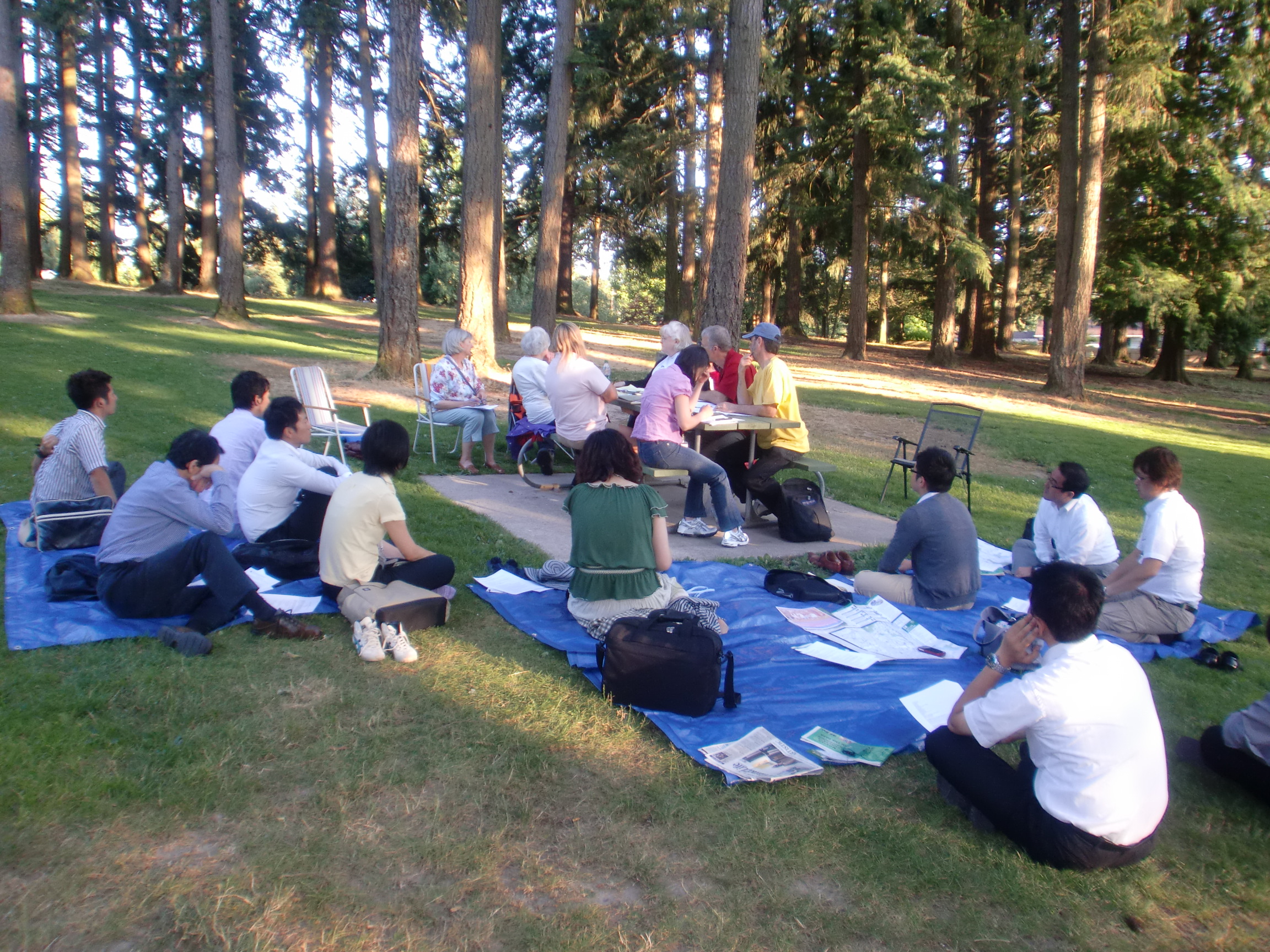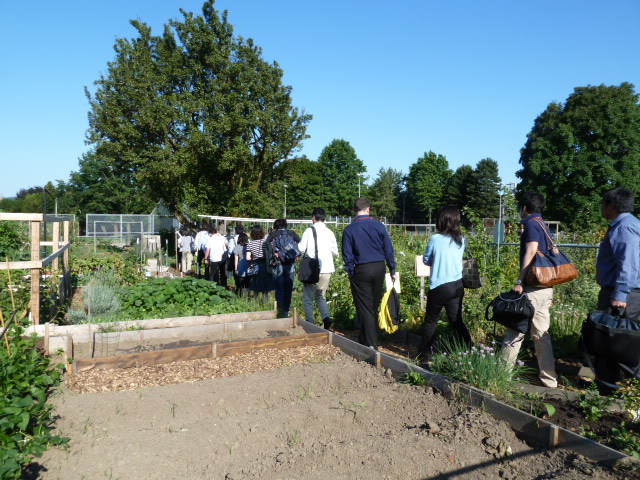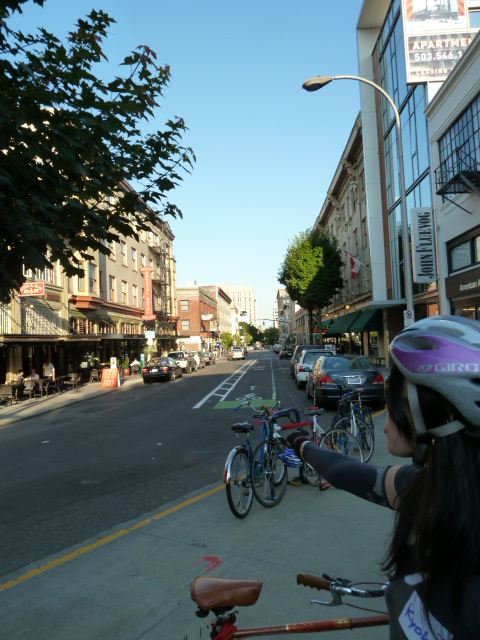The Tokyo Foundation Weekend School, a leadership training program for local administrators, sponsors an annual summer trip to Portland, Oregon, to observe participative municipal government in action. Rather than attend classroom lectures, participants in the summer program have the opportunity to get to know the city directly—sometime on foot, sometimes by automobile, bicycle, light rail, or streetcar—and to meet with various city officials, as well ordinary citizens. This last element is perhaps the program's most exciting feature, as it provides Japanese municipal employees with a rare opportunity to interact in person with the residents of a non-Japanese city.
Last summer I joined the trainees in Portland. As a researcher specializing in Japanese public policy, I took advantage of the experience to consider the differences between Portland and the average Japanese city in terms of municipal administration and attitudes toward public policy.
Needless to say, a one-week visit cannot provide a complete, in-depth picture, but in the course of our conversations with the people of Portland, some of the key issue with Japanese local administration began to appear in sharp relief.
Between Government and the Citizens
No examination of public policy in Portland would be complete without reference to the city's neighborhood associations. These are autonomous local organizations of ordinary citizens that meet periodically to discuss issues affecting the community, including conflicts with city hall or with other interests.

During the Portland trip, we learned a good deal about the area's neighborhood associations by talking to some of the figures involved and sitting in on actual meetings.
Neighborhood association meetings are not devoted to abstract discussions about the role of government and civil society. Their focus is on airing views and working together to solve everyday problems faced by members of the community.
A typical issue might stem from complaints by community members about construction noise and traffic congestion caused by renovation and expansion work at a local supermarket. The neighborhood association provides a framework for airing the problem, building a consensus for action, and entering into discussions with the supermarket. And with 95 such associations within a city of 550,000, building a consensus for an issue is always within the realm of possibility even in an urban environment.
In Japan, reaching a consensus would be hard enough in a rural community, where everyone knows one another, but in a congested urban neighborhood, it would be next to impossible. The only practical option, accordingly, is to seek the mediation of the local government. But will the authorities respond quickly enough? Does the local government even know how to deal with such a problem? Under the circumstances, many people may conclude that their only choice is to simply put up with the noise and traffic.
Portland's neighborhood associations will lobby the government when government action is needed, but this is not their primary purpose. They operate on the assumption that a community's problems are best solved by the residents themselves, who know the area best. At the same time, they facilitate a close interaction between municipal administrators and the community—which we were fortunate enough to witness.
One evening we decided to sit in on a neighborhood association meeting that was deliberating issues pertaining to the local park. We had assumed that the meeting would be in the conference room of some community hall, but when we arrived we saw that the venue consisted of picnic tables and benches in the park itself. (In mid-summer it stays light until around 9:00 pm in Portland.)
About a dozen residents showed up. They deliberated and reached agreements on a series of items, including renovation of facilities, questions about use of the garden, and so forth. It was only after some time had passed that we realized an official from the city's parks department was in attendance, too. She would join in the discussion whenever she felt it appropriate for a frank give-and-take with the residents in a relaxed but earnest atmosphere.
Interestingly, one of the Japanese trainees participating in the program told us that similar interaction between residents and local administrators had been common in his community until about 10 years ago. But for most people living in Japan, such a scene would be utterly unfamiliar. In Japan it seems that the more we depend on our government for services, the more remote and out of touch it becomes. Our experience in Portland made us keenly aware of this paradox.
Community Gardening
Local food is an important part of Portland's culture. People flock to farmers' markets held regularly at locations around the city, and locally grown organic food is standard on restaurant menus. This culture is one reason for the popularity of community gardens.

Community gardens are fields divided into multiple plots that people in the community use to grow vegetables or flowers—which may be construed as the agricultural equivalent of apartment living.
The city of Portland sponsors 39 community gardens, according to the city website, and there are others operated by nonprofit groups. The gardens are a common sight throughout the city. Nonetheless, in some areas the waiting period for a plot is several years.
During my visit I toured four such gardens. In noticed that each plot had its own distinct personality, some focused on flowers, others on vegetables, herbs, and blueberries. The gardens themselves had a distinct personality as well, reflecting the character and needs of the surrounding community.
Some offer enhanced access to water-supply facilities and communal gardening tools or provide elevated plots for people who have trouble bending over. One garden is setting up an educational program to teach gardening to urban children who have seen vegetables only in supermarkets. Other gardens are trying to contribute to the diet and health of low-income residents by providing them with organic vegetables grown on the site.
Amid all this diversity, one constant of Portland's community gardens is a clear commitment to their own ideals. Another is the absence of any obvious sign of government involvement. When we asked garden operators if there was anything they wanted or needed from the city, they rarely came up with a demand. Each garden governs itself and takes responsibility for solving its own problems.
Problems do occur, of course. Although a sense of fellowship prevails in most gardens, there are a few individualists who simply tend their own plots with no concern for anything growing around them. Yet every community garden is founded on certain shared principles, and in every case one can sense a focus on community. It seemed to me that these gardens held one of the keys to the new public paradigm.
Responsive Government, Responsible Citizens
The United States has a reputation as a place where it is difficult to get along without a car of one's own, but Portland offers a menu of environmental options, including bike paths and lanes, light rail, and streetcar service. Most notable is the way that public transportation, passenger cars, bikes, and pedestrians all manage to function side by side in an orderly, efficient manner.

Because bikers have their own lanes equipped with traffic signals, they do not pose a hazard to pedestrians. And even as automobile traffic congestion increases near the city center, the short blocks and numerous traffic lights keep speeds down, ensuring the safety of bikers.
Time and again, the city officials with whom we spoke stressed the concept of a government attuned to the citizens, and in many respects, Portland's transportation policies embodies this ideal.
When it comes to bike lanes, city officials make a point of riding their own bikes alongside ordinary citizens to obtain direct, personal knowledge of traffic and safety issues. They also ride along the routes children take to and from school and cooperate with the schools to make children aware of safety hazards. In this way the city has focused not only on the "hard" infrastructure of roads but also on the "soft" infrastructure of citizen awareness.
Portland's public transportation system is another of the city's distinguishing features. To commute between the suburbs and the city and move around Portland proper, residents rely heavily on the light rail and streetcar system. And in the Free Rail Zone downtown, anyone can ride free of charge, a system that has been in effect for almost 40 years.
However, in recent years a number of problems have forced the city to reconsider the Free Rail Zone. Aware that any such change is sure to be hotly contested, the city is using every avenue at its disposal to provide information and get feedback from the community—including neighborhood association meetings, websites, direct mail, and email—in an attempt reach some kind of consensus on the future of the system.
In fact, to compile an email list, city employees actually boarded trains and streetcars and asked passengers for their email addresses. It is difficult to imagine a Japanese civil servant hailing ordinary citizens on the street and asking for their email.
In this way Portland teaches us that fostering participative government is not simply a matter of holding town meetings. It requires ongoing and assiduous efforts on the part of administrators to devise and implement new ways of disseminating information and tuning in to the voice of the citizens—even if it means gathering email addresses one at a time.
Nonetheless if citizens consistently fail to respond to the Portland government's efforts to solicit their opinions by mail, email, and so forth, they are eventually removed them from the mailing list. This decision was explained to us in terms of administrative efficiency, but to my mind it points more fundamentally to the belief that residents who decline to offer any opinion despite being given the opportunity to do so forfeit their claim on the government's consideration when it comes time to make policy.
Who is ultimately responsible for the welfare of the community? For too long, Japanese citizens and administrators alike have operated on the assumption that the responsibility lies with the government alone. The time has come to rethink that proposition.
In Conclusion
A week in Portland provided considerable food for thought on public participation and the role of government. The participants in our program asked countless questions and listened thoughtfully to the answers. But their doubts lingered. Although they gained valuable insight into Portland's success, they could not help but wonder how they could turn that insight into concrete action to address their own communities' issues after they arrived back home.
In Japan today we seem to have exhausted the options for addressing community problems. But it is only the government-driven approach that has run out of sustainable solutions. New solutions will emerge once the paradigm changes to one in which the citizens assume responsibility, with the government offering only support. As to the best means of such support, the answer must emerge from dialogue with citizens.
Having engaged in direct dialogue with the people of Portland, our program's participants are ready to do the same in their own communities. They know that change will take time; every city official we spoke to in Portland told us that nurturing public participation involved a long-term commitment. But they are now convinced—as am I—that such dialogue is the first step toward solving their communities' problems.
